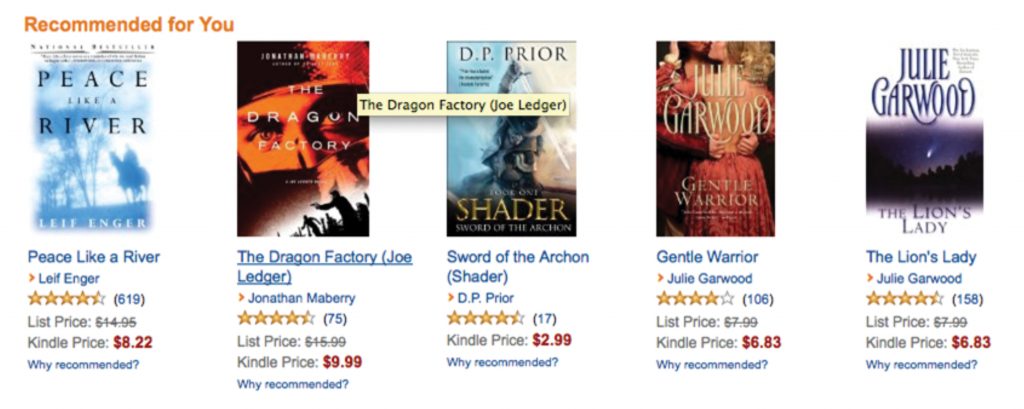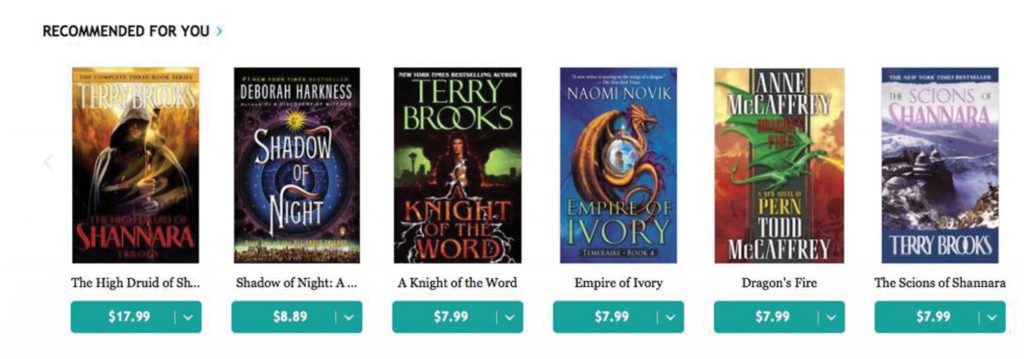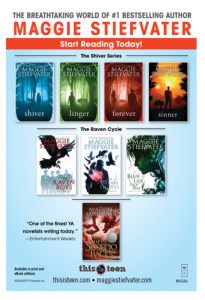PUBLISHED MAY 2017
by Kelly Peterson, Director of Client Services, INscribe Digital (a division of IPG) --
Watch Joshua Robertson's video recap of this article!

Kelly Peterson
A couple years ago, I moderated a panel that dished the tips and tricks of creating an e-book bestseller, and the advice is still fresh today. The panel included Tobly McSmith, digital account director at HarperCollins; Nathan Maharaj, director of merchandising at Kobo; and Susan Ruszala, then-president of NetGalley. The biggest takeaway? A four-part comprehensive marketing plan is key: 1) pre-order, 2) general merchandising, 3) discount marketing, and 4) free books. These four areas make up the foundation of success owned by big publishers. But small publishers and independent authors can take advantage of this plan, too.
1. Pre-order
The length of the runway is key. It is recommended to make your titles available at least six months prior to on-sale, but the longer the better. While sales spike in the two months prior to release, those extra months give customers even more opportunity to find the title. Plus, retailers factor in those sales when deciding what to promote. And since pre-order sales are all counted on release day, they help drive bestseller status.
Additionally, having a long pre-order runway gives the retailers time to build excitement for the title with pre-order marketing. Those placements can roll right into general merchandising, so it gives retailers more of a chance to leverage the assets they make, like banner ads, in different ways.
Pre-order sales are also a great way to tell what is working with a marketing campaign. Using NetGalley to test the metadata and reader response is even better. Most books offered on NetGalley are not yet for sale, which enables the publisher or author to process and respond to reader feedback. Receive a lukewarm review? Did the description not lure in a lot of readers? Then fix it. Build a group of readers who will spread the word about your books, and share your NetGalley widget with them. Ask them to schedule a review that fits best with your schedule: staggering works for long-term buzz, but sometimes releasing numerous reviews simultaneously works beautifully.

Pre-order banner ad
Genre fiction does best in total pre-orders. Romance, science fiction/fantasy, mystery, and thriller all lend themselves to repeat purchases. Those readers read more than the average bear, so they’re more willing to try new authors. If you are trying to break into these genres, keep in mind that building your pre-order plan is even more important.
Pre-orders are counted twice in some retailers’ algorithms. That means your book will show up more often in the “Customers Who Bought This …” areas of those sites. This is one of the most clicked areas on any page; customers like recommendations catered to their tastes.

Because pre-order is a contract with their customers, all retailers need to know the asset is going to arrive in plenty of time. INscribe Digital requests that assets be delivered a month before release. This gives cushion for fixing failed files, processing time on the retailer end, and some room to spare ahead of release day. Why is that critical? If the file is not there to be delivered, then customers paid for a product but don’t get it. The one-two punch of a digital order gets interrupted. As an author or publisher, pre-order is a tremendous asset to you, but you must be prepared to fulfill that promise, both to your retailer partner and your readers.
2. General Merchandising
As mentioned earlier, creating a long runway is key. Each retailer merchandises their site on different schedules, but each generally works a full quarter ahead. That means they are booking merchandising placement for September in June. Small publishers that don’t plan far enough ahead are often shut out of prime placement as a result.
Nathan Maharaj compares brick-and-mortar stores with their web counterparts. Each store features their top-selling content right when you walk in the door. At e-tailers, the lion’s share of their business comes from the front page and category pages of the site. Genre readers tend to bookmark those pages and visit regularly, although nothing beats the front page. “Above the fold” is also key; it’s great to get placement that doesn’t require scrolling down.
Other top spots are at the suggestion areas of the site: “Customers Who Bought This …” and editorial areas. “Customers Who Bought This …” areas are driven by algorithms and are heavily dependent on a title’s first week sales. If you are marketing your titles early enough, you can really make this count with strong merchandising at launch. The nice thing about “Customers Who Bought This …” is that they show up on individual title pages. So if you can find big titles that are similar, utilize similar BISACs. That way, the algorithms will work for, not against, you.
So, what time is the right time to pitch? Tobly McSmith merchandises titles six months to a year before they are released.
Susan Ruszala told us NetGalley’s digital galley program has shown outstanding success—mostly in part to their strong targeted e-marketing campaigns. Maharaj agreed in the power of e-mail; he said that outreach is consistent and worthwhile, especially in reaching genre readers. Getting your titles into these big e-mail blasts involves signing up for promotions and placement. As with pre-orders, the longer the runway, the easier this is.
INscribe Digital recommends that you make retailer-specific versions of your title. By putting in active links to your other books, your reader’s next purchase becomes as easy as one click. As Amazon can tell you, one-click purchasing works.
3. Discount Marketing
Discounting is important—and it is even more important to do it strategically. If you are going to offer a discount, what do you expect to get in return for that investment? If it doesn’t pay off immediately, what can you do to improve your results? Discounts need to give you a positive return. E-book customers seem to be price-conscious readers. Every retailer has dedicated space for e-books under a certain price: for example, the main NookBook page has a dedicated icon for books under $2.99.
Tobly described how HarperCollins utilizes discounting tactics. When a new book releases, his team often marks down the authors’ earlier works to lure new fans. This is particularly effective for authors with a larger backlist.
Discounting backlist is also a great reward for existing fans, who may want an electronic copy to go with their physical edition. And leveraging older backlist as a discounted title is a great way to promote an author in time for a new (full price) release. It also messages that the title is discounted for an event, so customers don’t expect the price to stick around: that creates urgency.

Another reason that authors discount is to build readership. If a great book isn’t selling at all, perhaps it is time to find a new audience who will become its advocate. Here, the risk is minimized by the low sales trend. After all, selling 10 copies at $1.99 beats selling zero copies at $9.99! Pricing should be handled judiciously. It’s important to leave yourself a little room for discounting; some retailers only promote titles on a large scale if they can offer the lowest price. This strategy works best when supported by social media, blogs, and marketing dollars: An investment in outreach will expose readers to this good deal.
The very best time to discount is in a retailer-supported promotion. Amazon’s Kindle Daily Deals show amazing sales and a long tail lift. INscribe Digital titles have seen unit growth as much as 1,000-6,000 times day-to-day, staying strong for the rest of the month. After 30 days, the titles will settle to a new normal, but INscribe titles all compare very favorably between the two weeks after the deal to the two weeks before the deal.

Why do retailer promotions work? Because they have guaranteed outreach and marketing. Kobo, for example, targets promotions at times readers are shopping. Other retailers leverage daily deal e-mails and device notifications, and social media for the retailers often pick up these titles for their daily messaging. When authors amplify and share these promotions, it works to everyone’s advantage.
There are two important things to keep in mind here: good planning and flexibility. Retailer-driven promotions require signing up well in advance, and often have requirements for participation. There’s no guarantee you will be included—but nothing ventured, nothing gained.
If you are going to discount, consider updating the back matter of your book and adding retailer-specific links. This acts as a timely place to advertise your next book while providing an easy one-click buy option to a customer looking for her next read. By making the purchase process so easy, it truly becomes a service.
4. Free Books
Free books have been available to readers for centuries: The Library of Alexandria still lives on in legend. Free e-books from retailers serve the same purpose as the ones checked out at libraries: They help readers find new favorite authors at little risk. That means that new devices bring new customers who will be experimenting with the e-book apps, comparing all the bells and whistles. Maharaj mentioned that many Kobo customers download free books as their first reads, but then later move on to paid content, often by the same author. Free is a great way to find new readers for all your titles.
Genre readers are not just voracious readers; they also love free offers. While the American Bookseller Association describes an avid reader as someone reading over 10 books a year, genre readers can be reading that many a month. That means that they are always in the market for new authors and are more likely to give an unknown name a try. It could also mean that they need to stretch their budget a bit, which means that they will check out the freebies. Are you writing genre fiction? This might be your gateway to popularity.

There’s a little catch to free: It only works well for authors if they have more books available to sell. If you give your only book away for free, you might find readers, but they’ll forget about you by the time your second book comes out. At Harper Collins, Tobly uses free first books in series to support authors who have several books available for sale. That way, the reader gets the first book free, but they’ll pay full price to see what happens next. If it’s your only book, giving it away to likely readers just means they will never pay money for your writing.
There is one exception: It’s okay to give your only book away for free if you get something great in return. Susan Ruszala told us about the best practices for NetGalley, and we concur; NetGalley can get you a lot of attention for your title when it is available for pre-order. NetGalley provides access to librarians, booksellers, active bloggers, and people who review books on multiple retailers. That free book can pay off in great publicity and attention. It’s critical to reach back out to those reviewers once your book is on sale to ask them to add their reviews to the retailer sites.
Now that you have this four step action plan, it’s time for you to publish the next e-book bestseller!
Kelly Peterson is director of client services at INscribe Digital, a division of IPG, and brings 20 years of marketing and merchandising experience to her current role. At INscribe Digital, she helps major trade publishers, university presses, independent publishers, agents and authors maximize their e-book sales and marketing efforts at the major retailers. She is also a board member and professional development coordinator for the Bay Area Women in Publishing.